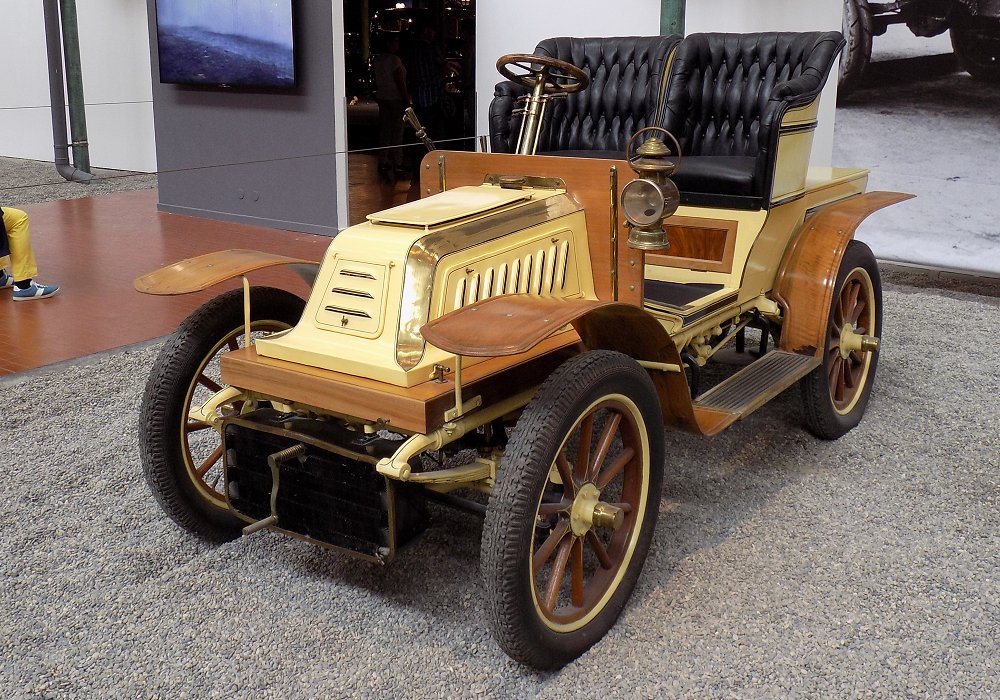Description
The De Dion-Bouton Type S Biplace was a compact and refined motorcar produced in the early 1900s, a period in which the French manufacturer was at the forefront of automotive innovation. The Type S belonged to a lineage of small, single-cylinder vehicles that offered accessible and reliable motoring for the growing number of early car buyers in Europe. As with many of De Dion-Bouton’s designs from this era, the Type S combined mechanical simplicity with elegant styling.
At its heart was a single-cylinder petrol engine mounted at the rear of the vehicle. Typically delivering between 6 and 8 horsepower, the engine was engineered for smooth operation and ease of maintenance. It featured mechanically actuated valves and used a low-tension magneto ignition system, which had become standard in the company’s more advanced models. Power was transmitted to the rear wheels via a two-speed gearbox and a chain drive, a robust and familiar configuration for De Dion-Bouton cars of the time.
The biplace configuration referred to the seating arrangement of the car: a two-seater layout designed for a driver and one passenger. This body style was compact and ideal for personal transport, particularly in urban areas or for light countryside touring. The seats were usually mounted side-by-side and upholstered in leather, with brass fittings and a curved dashboard providing a modest degree of refinement.
The chassis was lightweight and made from tubular or steel sections, supporting a pair of solid axles with semi-elliptic leaf springs to absorb the bumps of rough early roads. The ride quality was basic but adequate, given the modest speeds the car could achieve. Steering was typically handled via a steering wheel, which had begun to replace the older tiller systems in this generation of cars. Braking was managed through a combination of a transmission brake and a hand lever that operated mechanical brakes on the rear wheels.
With its compact dimensions, reliable engine, and understated style, the De Dion-Bouton Type S Biplace was well-suited to the needs of early motorists who wanted a practical and manageable automobile without the complexity or cost of larger touring cars. It reflected De Dion-Bouton’s philosophy of engineering efficiency and accessible design, making it a popular choice among private owners during the transition from the horseless carriage to the modern automobile.
Today, the Type S Biplace is a rare and evocative example of early motoring history. It captures the spirit of innovation and experimentation that defined the early years of the automobile and stands as a testament to De Dion-Bouton’s important role in the development of practical, everyday cars.
